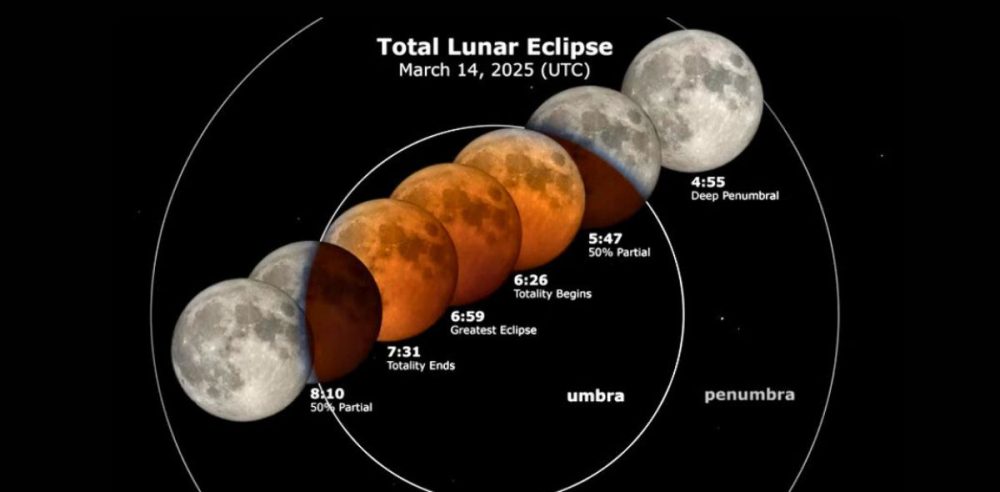Sky watchers across the U.S. and other parts of the Western Hemisphere will have the opportunity to view a ‘blood worm moon’ as the Sun, Earth, and Moon align in syzygy late Thursday night into early Friday morning.
A total lunar eclipse will occur as the Earth makes its way between the Sun and the Moon, casting a shadow on the Moon. Some light from the Sun will still pass through portions of the Earth’s atmosphere to reach the Moon, causing it to appear to have a reddish-orange glow.
“The more dust or clouds in Earth’s atmosphere during the eclipse, the redder the Moon appears,” according to NASA. This phenomenon is why the celestial event is called a “blood moon.”
The March full moon is also called a “worm moon,” possibly because it arrives just ahead of the spring season, when earthworms typically appear, according to The Old Farmer’s Almanac.
The eclipse will begin at about 10:57 p.m. CDT on March 13 as the Moon enters the Earth’s penumbra, the outer part of the shadow. At this point, the effect on the Moon will be subtle.
The partial eclipse begins at 12:09 a.m. CDT on March 14 as the Moon enters the Earth’s umbra, making it appear as if a bite has been taken out of the Moon.
Totality begins at 1:26 a.m. CDT, with the Moon now covered by the Earth’s umbra. This is when the Moon will take on a reddish tint. Totality ends 65 minutes later at 2:31 a.m. CDT, as the Moon begins to exit the Earth’s umbra.
The partial eclipse ends at 3:47 a.m. CDT, and the penumbral eclipse ends at 5 a.m. CDT.
No special equipment is needed to view the eclipse, but binoculars or a telescope can enhance the viewing experience. Likewise, a dark environment away from bright city lights will make for better viewing conditions.
The last total lunar eclipse visible in the U.S. occurred on November 8, 2022. The next one is predicted to occur on March 3, 2026, per NASA.


